First Thanksgiving - Boston City Hall Linda Coombs

First Thanksgiving - Boston City Hall Paul Weeden
Princess Redwing was selected on behalf of her peers to be the first Native American to address the United Nations in 1946. Before her death in 1987 she called her people together to pass the mantle of her authority as orator and protector of the Royal House of Pokanoket and the Pokanoket Tribe of the Wampanoag to her nephew Deerfoot.
Since that ceremony in 1987 Deerfoot has traveled widely as orator for his people, speaking at schools and service organizations throughout the country, carrying on a documented tradition that has spanned generations.
Posted with permission from Mayor's Office of New Bostonians and City Hall Cultural Awareness Committee.
 https://www.youtube.com/watch?v=hi1do1aSUIM
https://www.youtube.com/watch?v=hi1do1aSUIM 
Wampanoag people held many seasonal thanksgiving ceremonies
Wampanoag people have always held many seasonal thanksgiving ceremonies. But there is a big difference between these ancient and ongoing celebrations and the Pilgrims' first harvest festival which led to the establishment of the National holiday now known as Thanksgiving. For Wampanoag people, this holiday evokes painful feelings about the consequences they are forced to endure for European settlement and the establishment of America. Children in elementary classrooms learn that the Pilgrims had the right to this land. This is a distortion that deprives Wampanoag people of their history and ignores the devastating events that followed. Listen as Wampanoag people describe their own thanksgivings and the national holiday called Thanksgiving.
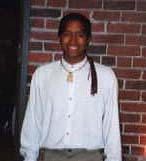
-- Tobias Vanderhoop
Aquinnah Wampanoag
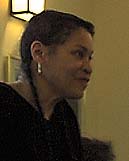
-- Ramona Peters
Mashpee Wampanoag
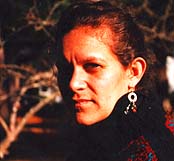
-- Jessie Little Doe Fermino
Mashpee Wampanoag
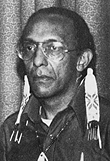
-- Frank James
Aquinnah Wampanoag
Speech that was to be delivered 1972

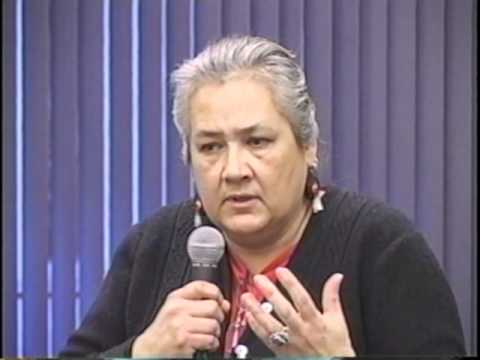
Wampanoag Historian on Surviving Almost 400 Years of Thanksgivings
When Linda Coombs, Aquinnah Wampanoag historian, scholar, educator and artist, appeared at the New England American Studies Association’s (NEASA) annual meeting this fall, she captured her audience by beginning her presentation with a joke. “Everybody knows that April showers bring May flowers. But what do Mayflowers bring?” Coombs said. The answer? “Pilgrims!”
The subject of pilgrims and Thanksgiving are particularly significant to the Wampanoag people who were the first to come in contact with the fleets of settler colonists who invaded the shores of the Wampanoag territory in what became Massachusetts. Coombs spent three decades with the Wampanoag Indigenous Program at Plimoth Plantation, serving as the program’s associate director for 15 years. She has written several essays documenting colonial history from a Native American perspective and is a frequent speaker about the need for more accurate representations of colonial events including the first Thanksgiving and Columbus Day. She is director of the Aquinnah Cultural Center at the tribe’s island homeland on what is now known as Martha’s Vineyard in Massachusetts, where she was born and grew up. She lives with her family in the Mashpee Wampanoag community on Cape Cod. She talked with Indian Country Today Media Network about Thanksgiving and the upcoming 400th anniversary of the arrival of the pilgrim settler colonists on Wampanoag territory.
What’s your take on Thanksgiving; what do you do?
Well, years ago everyone used to go to the National Day of Mourning in Plymouth and it still goes on, but it’s changed over the years. They’ve included black issues and gender issues and Latino issues, which in and of itself is fine except all of those groups have so many more people than we do—far more than Native Americans as a whole, so I think that day should have been kept just as a Native day because our issues get lost in the larger tsunami [of injustices]. Some people still go… On Martha’s Vineyard, I think if people celebrate it at all, it’s to have a turkey dinner with family. You could talk to 10 people and get 10 different answers. There are people who think similarly to me that the whole concept of Thanksgiving as it’s generally seen or practiced in this country is kind of like a superficial layer over what’s really on the ground. I think a lot of people get that.
What do you think is the most egregious misunderstanding about Thanksgiving?
Probably that it’s perceived that we welcomed them. Yeah, they think we were just standing there waiting for them and welcoming [them] and one guy handed them the turkey and another guy handed them the carving knife and they all went to dinner—it’s just ridiculous! What really happened was there was no contact with them for six months. But we were watching them and seeing what they were doing. And it was Samoset who was from Maine and was down visiting who made the first contact—I always figured they sent the guy from out of town to do it! But then there was a feasting event the next fall that’s been interpreted as the first Thanksgiving. But it wasn’t even dubbed that till the 19th century.
What did you do at the Plimoth Plantation?
Over the years I held various titles. I started out as an interpreter and an artisan because in the Wampanoag Program we get to learn the 17th century technologies and skills because the staff creates the outdoors exhibit. Over the years I did foodways, and collections management and horticulture and wardrobe. At one point I oversaw the education component and then in 1996 I became the associate director.
When did you leave, and why?
I was laid off in 2010.
Let's talk turkeys!
The way I look at the whole turkey thing is turkeys are one of our indigenous birds here, so I have no problem eating turkey any day of the year. They were one of the things we could get on a year-round basis. Squash, cranberries—all that comes from us.
But non-Natives don’t know that or they don’t think about that.
No, they don’t.
At the NEASC meeting you said there isn’t much Native representation in the planning for the 400th anniversary of the landing of the pilgrims at Plymouth Rock.
Yes, the 2020 event. When I wrote that [NEASC] speech I looked up the website and it was all pilgrim focused. The only mention of Natives was that Natives have lived here for thousands of years. To me that’s just the thinking of a very large number of American people. That committee [planning the 400th anniversary events] started back in 2007 and there were 27 members on it and there were two Wampanoag people. And after a few years they both left. My impression is every time they suggested some Native component they were shot down, disregarded, glazed over. A Cherokee guy and an Aquinnah guy joined them a few years ago. In a conversation I had with the Cherokee guy he was saying, ‘Oh, we can have a powwow! We can have the Wampanoag Nation singers and dancers.’ And I’m thinking, what? Our part in this whole thing is going to be to sing and dance for them? After 400 years? Come on!
This isn’t about bashing pilgrims, which is something I’ve been accused of in a circuitous way. When I was younger working at the Plantation we used to say some pretty sassy things like, ’Oh, the English only bathed twice a year’—which I think was true—and I would add, ‘whether they needed it or not.’ And then I realized that’s not good interpretation at all. And if I’m going to talk about English hygiene practices I need to be as accurate as I am when I talk about Wampanoag practices, because there are enough distortions in history and people don’t always get the humor and sarcasm. That was one lesson I learned and I’ve always since worked toward that end—to be truly representational. On the other hand, when the English came here there are things that happened because they came here and they did hold certain attitudes toward us and had certain intentions. And I don’t think it’s right to cover it up and say, oh, they all sat down and had a lovely turkey dinner and lived happily ever after.
The 2020 website says: ‘Be a part of Plymouth turning 400! Rediscover the partnership formed between the Wampanoag Nation and the Pilgrims… It’s an American story and a national legacy.’
Oh God! Those are the words that are so phony!
Are they really or is it just the way the dominant society sees things?
Well, the way they see it or want to see it—or both. It’s just time to be inclusive, you know?
What can be done about educating people about history?
I’m not sure I have an answer. Sometimes it just gets lost in the wind, you know? But—and it’s not just me—we’re not giving up. We write, we speak, we teach classes, we work through the museums we work at, and just try to reach people that way. We don’t count in the everyday life of America and I think that’s a perception that has to change.
Interview with Linda Coombs by Gale Courey Toensing from Indian Country Today at:
 http://indiancountrytodaymedianetwork.com/2013/11/28/wampanoag-historian-talks-thanksgiving-and-upcoming-400th-anniversary-152455
http://indiancountrytodaymedianetwork.com/2013/11/28/wampanoag-historian-talks-thanksgiving-and-upcoming-400th-anniversary-152455 
Interview with Earl Mills, Sr. - Mashpee Wampanoag
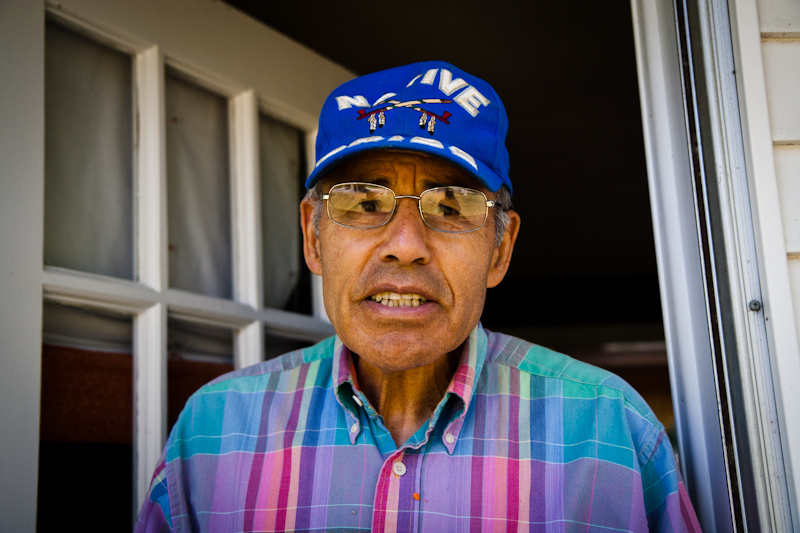
Earl Mills, Senior
A Native view on Thanksgiving
With little mention of the native population, the Wampanoag presence was virtually relegated to the background, and the Pilgrim presence promoted to the fore.
"The Wampanoag, we sometimes forget, were the majority population," Ms. Brennan says. "In the 19th and 20th centuries, Thanksgiving was really a tool for Americanization amid the great influx of immigration. It was supposed to bind this diverse population into one union."
And so, over the centuries, that first Thanksgiving took on a shape of mythological proportions. But how Americans celebrate today has little to do with the convergence of two different populations across an enormous cultural divide.
One man who would like people to know more about the actual Thanksgiving is descended from the Wampanoag Indians who were such an essential part of the first Thanksgiving celebration.
He steps out onto the porch in front of the Flume restaurant in Plymouth and looks south. He lifts his face - marked by deep lines and dark, heavy eyes - toward the open sky.
"I'm looking down the river here now, and the sun is bright, and the tide is high, and the wind is blowing," he says. "My people would say that is the spirit coming from the southwest, where the corn and beans and squash come from. So we thank the spirit world - the fire, the moon, the sky, the sun, the earth."
This man's name is Earl Mills Sr., and he is a retired high school teacher and athletic director, the author of two books, and the owner of the restaurant.
But Mr. Mills has another name and another job. As Flying Eagle, he is the chief of the Mashpee Wampanoag tribe.
Still, he doesn't see himself as caught between two cultures. Instead, he embraces both.
With equal relish, Mills will spend an afternoon walking in peaceful silence, as his ancestors did, or an evening listening to the Boston Symphony Orchestra.
He has always spent a lot of time thinking about the history of his people, however, and the confusion about what really happened back in 1621.
"Things have changed so much," he says, choosing his words carefully. "Even Thanksgiving has changed. Young people today don't remember what it was like 50 or 100 years ago.
"Then, we picked our own cranberries from our own cranberry bogs, and we caught rabbits and hung them outside our garage doors."
It is not just the eating, but the gathering together, preparing, and thanking that matters, Mills says. "The role of food is important, but it's gotten to the point where we become gluttons.... We could spend a lot more time really thinking about what's going on in our world and giving more thanks."
Mills points to the Plymouth Rock on the town's waterfront as an example of differing views. The rock, first placed in 1774, is a monument to the landing of the Mayflower, the ship that brought the Pilgrims to Massachusetts 382 years ago.
"They're saying this is 'America's hometown,' that this is the rock [the colonists] stepped on," Mills says. "I'm not against that, and it's nice to have the rock, but don't try to make it true when it's really a symbol, a mythology."
He's also disturbed by the fact that many people still don't know or seem quick to dismiss the native side of the story.
"When I talk about Thanksgiving, [some people think] it happened too long ago to matter," Mills says. "But when they talk about it, well, it's history."
Still, the Wampanoag now have many more opportunities to contribute to historical accounts of the region, offering insight into the traditions of their people that have been passed down orally through the generations.
"The two groups are working very well together in recent years," Mills says. "And those connections turn into a circle. No matter how small, how minor, they all contribute to the human beings that we are."
In late 1621, remembering the first Thanksgiving gathering, Edward Winslow expressed a sentiment similar to Mills's call for sharing and giving thanks:"And although it be not always so plentiful as it was at this time with us, yet by the goodness of God, we are so far from want that we often wish you partakers of our plenty."
Source:
 http://www.csmonitor.com/2002/1127/p13s02-lign.html/(page)/2
http://www.csmonitor.com/2002/1127/p13s02-lign.html/(page)/2

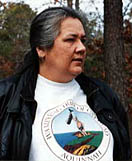
In the culture of the Wampanoag Indians, who inhabited the area around Cape Cod, "thanksgiving" was an everyday activity.
"We as native people [traditionally] have thanksgivings as a daily, ongoing thing," says Linda Coombs, associate director of the Wampanoag program at Plimoth Plantation. "Every time anybody went hunting or fishing or picked a plant, they would offer a prayer or acknowledgment."
But for the 52 colonists - who had experienced a year of disease, hunger, and diminishing hopes - their bountiful harvest was cause for a special celebration to give thanks.
"Neither the English people nor the native people in 1621 knew they were having the first Thanksgiving," Ms. Coombs says. No one knew that the details would interest coming generations.
"We're not sure why Massasoit and the 90 men ended up coming to Plimoth," Coombs says. "There's an assumption that they were invited, but nowhere in the passage does it say they were. And the idea that they sat down and lived happily ever after is, well, untrue. The relationship between the English and the Wampanoag was very complex."
Found at:  http://www.csmonitor.com/2002/1127/p13s02-lign.html/(page)/2
http://www.csmonitor.com/2002/1127/p13s02-lign.html/(page)/2


The Suppressed Speech of Wamsutta James, a Wampanoag Indian
In 1970 Wamsutta James, a Wampanoag Indian, was invited to speak at Plymouth Rock during the annual reenactment of Thanksgiving in Plymouth Massachusetts which started in 1921 and has since become a large tourist attraction. During this annual event people gather at a church on the site of the Pilgrims' original meeting house, in 17th century costume, and after prayers and a sermon they march to Plymouth Rock. But when the Commonwealth of Massachusetts anniversary planners reviewed Wamasutta James speech, they would not let him give it. In the place of this speech, James was offered an alternative, written by a public relations person, but he refused to be censored and withdrew from participating in the celebration. This speech is known as "The Suppressed Speech of Wamsutta (Frank B.) James". It is also known to be the beginning of the National Day of Mourning. This is his speech:
"I speak to you as a man -- a Wampanoag Man. I am a proud man, proud of my ancestry, my accomplishments won by a strict parental direction ("You must succeed - your face is a different color in this small Cape Cod community!"). I am a product of poverty and discrimination from these two social and economic diseases. I, and my brothers and sisters, have painfully overcome, and to some extent we have earned the respect of our community. We are Indians first - but we are termed "good citizens." Sometimes we are arrogant but only because society has pressured us to be so.
It is with mixed emotion that I stand here to share my thoughts. This is a time of celebration for you - celebrating an anniversary of a beginning for the white man in America. A time of looking back, of reflection. It is with a heavy heart that I look back upon what happened to my People.
Even before the Pilgrims landed it was common practice for explorers to capture Indians, take them to Europe and sell them as slaves for 220 shillings apiece. The Pilgrims had hardly explored the shores of Cape Cod for four days before they had robbed the graves of my ancestors and stolen their corn and beans. Mourt's Relation describes a searching party of sixteen men. Mourt goes on to say that this party took as much of the Indians' winter provisions as they were able to carry.
Massasoit, the great Sachem of the Wampanoag, knew these facts, yet he and his People welcomed and befriended the settlers of the Plymouth Plantation. Perhaps he did this because his Tribe had been depleted by an epidemic. Or his knowledge of the harsh oncoming winter was the reason for his peaceful acceptance of these acts. This action by Massasoit was perhaps our biggest mistake. We, the Wampanoag, welcomed you, the white man, with open arms, little knowing that it was the beginning of the end; that before 50 years were to pass, the Wampanoag would no longer be a free people.
What happened in those short 50 years? What has happened in the last 300 years? History gives us facts and there were atrocities; there were broken promises - and most of these centered around land ownership. Among ourselves we understood that there were boundaries, but never before had we had to deal with fences and stone walls. But the white man had a need to prove his worth by the amount of land that he owned. Only ten years later, when the Puritans came, they treated the Wampanoag with even less kindness in converting the souls of the so-called "savages." Although the Puritans were harsh to members of their own society, the Indian was pressed between stone slabs and hanged as quickly as any other "witch."
And so down through the years there is record after record of Indian lands taken and, in token, reservations set up for him upon which to live. The Indian, having been stripped of his power, could only stand by and watch while the white man took his land and used it for his personal gain. This the Indian could not understand; for to him, land was survival, to farm, to hunt, to be enjoyed. It was not to be abused. We see incident after incident, where the white man sought to tame the "savage" and convert him to the Christian ways of life. The early Pilgrim settlers led the Indian to believe that if he did not behave, they would dig up the ground and unleash the great epidemic again.
The white man used the Indian's nautical skills and abilities. They let him be only a seaman -- but never a captain. Time and time again, in the white man's society, we Indians have been termed "low man on the totem pole."
Has the Wampanoag really disappeared? There is still an aura of mystery. We know there was an epidemic that took many Indian lives - some Wampanoags moved west and joined the Cherokee and Cheyenne. They were forced to move. Some even went north to Canada! Many Wampanoag put aside their Indian heritage and accepted the white man's way for their own survival. There are some Wampanoag who do not wish it known they are Indian for social or economic reasons.
What happened to those Wampanoags who chose to remain and live among the early settlers? What kind of existence did they live as "civilized" people? True, living was not as complex as life today, but they dealt with the confusion and the change. Honesty, trust, concern, pride, and politics wove themselves in and out of their [the Wampanoags'] daily living. Hence, he was termed crafty, cunning, rapacious, and dirty.
History wants us to believe that the Indian was a savage, illiterate, uncivilized animal. A history that was written by an organized, disciplined people, to expose us as an unorganized and undisciplined entity. Two distinctly different cultures met. One thought they must control life; the other believed life was to be enjoyed, because nature decreed it. Let us remember, the Indian is and was just as human as the white man. The Indian feels pain, gets hurt, and becomes defensive, has dreams, bears tragedy and failure, suffers from loneliness, needs to cry as well as laugh. He, too, is often misunderstood.
The white man in the presence of the Indian is still mystified by his uncanny ability to make him feel uncomfortable. This may be the image the white man has created of the Indian; his "savageness" has boomeranged and isn't a mystery; it is fear; fear of the Indian's temperament!
High on a hill, overlooking the famed Plymouth Rock, stands the statue of our great Sachem, Massasoit. Massasoit has stood there many years in silence. We the descendants of this great Sachem have been a silent people. The necessity of making a living in this materialistic society of the white man caused us to be silent. Today, I and many of my people are choosing to face the truth. We ARE Indians!
Although time has drained our culture, and our language is almost extinct, we the Wampanoags still walk the lands of Massachusetts. We may be fragmented, we may be confused. Many years have passed since we have been a people together. Our lands were invaded. We fought as hard to keep our land as you the whites did to take our land away from us. We were conquered, we became the American prisoners of war in many cases, and wards of the United States Government, until only recently.
Our spirit refuses to die. Yesterday we walked the woodland paths and sandy trails. Today we must walk the macadam highways and roads. We are uniting We're standing not in our wigwams but in your concrete tent. We stand tall and proud, and before too many moons pass we'll right the wrongs we have allowed to happen to us.
We forfeited our country. Our lands have fallen into the hands of the aggressor. We have allowed the white man to keep us on our knees. What has happened cannot be changed, but today we must work towards a more humane America, a more Indian America, where men and nature once again are important; where the Indian values of honor, truth, and brotherhood prevail.
You the white man are celebrating an anniversary. We the Wampanoags will help you celebrate in the concept of a beginning. It was the beginning of a new life for the Pilgrims. Now, 350 years later it is a beginning of a new determination for the original American: the American Indian.
There are some factors concerning the Wampanoags and other Indians across this vast nation. We now have 350 years of experience living amongst the white man. We can now speak his language. We can now think as a white man thinks. We can now compete with him for the top jobs. We're being heard; we are now being listened to. The important point is that along with these necessities of everyday living, we still have the spirit, we still have the unique culture, we still have the will and, most important of all, the determination to remain as Indians. We are determined, and our presence here this evening is living testimony that this is only the beginning of the American Indian, particularly the Wampanoag, to regain the position in this country that is rightfully ours.
Wamsutta
September 10, 1970

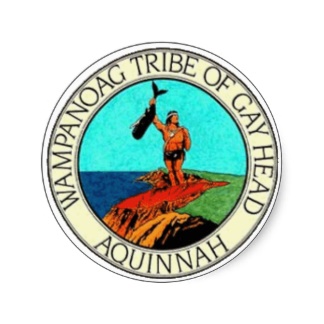

|
The link to the Wampanoag Tribe of Gay Head Aquinnah is:
 http://www.wampanoagtribe.net/pages/wampanoag_education/celebrations
http://www.wampanoagtribe.net/pages/wampanoag_education/celebrations

Mashpee Wampanoag letter from the Chairman to the community
Thanksgiving Day 2012
Dear Tribal Community,
Warm greetings to you and your family on this Thanksgiving Day 2012. The Thanksgiving holiday is a complicated day for our people. We are forever intertwined with the American Thanksgiving myth, however inaccurate it may be. Some of our people choose to observe this day as a Day of Mourning. Some choose to celebrate in a thoroughly American way. Many choose a different path, spending the day with family and friends, but acknowledging our unique history and connection to this day.
Thanksgiving is not something we as Wampanoag people do on a single day, it is a way of life. Every day we give thanks to the Creator, thanks to our ancestors, and thanks to the natural world around us. Today is no different. We give thanks.
We strive every day to continue in the ways of our ancestors: welcoming people and treating them with dignity and respect. Helping each other in any way we can. Creating a better future for seven generations to come.
Today and every day, please join me in giving thanks to our ancestors, who, despite attempts to eliminate their presence on this earth, persevered and made it possible for us to be here today. Thanks to our Tribal family, our Elders for their wisdom and guidance; to our Youth and their hard work to make their way in this modern world by learning the ways of their ancestors while also getting the education they need to provide a better future for themselves and their Tribal family; and to all Tribal citizens who work hard every day to provide services to those in need, preserve our history and culture, and lift our whole Tribal nation up with positivity and respect.
No matter how you choose to observe this day, please know this: I am thankful for you. I hope that you are surrounded by your loved ones and have a blessed day.
Kutaputunumuw;
Cedric Cromwell
Qaqeemasq (Running Bear)

THE WAMPANOAG STORY by Darcey Laine
For thousands of years before the first Pilgrim sailed from Europe, the land we now call America was home to many different nations. In these places we call Palo Alto, or Mountain View, the Ohlone people lived. In the place we now call Massachusetts, the Wampanoag, Nipmuc, Narragansett, and Pequot Nations lived. According to Ramona Peters, who is a Mashpee Wampanoag living today:
We name ourselves after the land we live with. Because, not only are we breathing in, we are also drinking from the water that is flavored by that very land. Whatever is deposited in the soil is in the water is in us. So we are all one thing, and we name ourselves after the place that is our nurturing. That sustains our life.
Four hundred years ago, at a time before the Europeans had ever heard of the them, there were 12,000 Wampanoag people living in 40 villages near Martha's Vineyard and Nantucket: a rich, sophisticated society. They "lived with this land for thousands of generations- fishing in the waters, planting and harvesting crops, hunting the four-legged and winged beings and giving respect and thanks for each and every thing taken for [their] use. [The Wampanoag] were taught to use many resources, remembering to use them with care, respect, and with a mind towards preserving some for the seven generations of unborn, and not to waste anything." (1)
The men women and children of the Wampanoag lived in round, bark-covered wigwams called wetus. Instead of driving to the Grocery Store to buy food shipped from thousands of miles away, they ate the food that grew nearby. As fruits, berries, and flowers came into their season, they were harvested and eaten while they were still fresh. Anything extra was saved for later by drying or smoking. We are used to eating chicken and turkey, but these children grew up eating roasted ducks, roasted geese, passenger pigeon, or partridge. In the same way that we eat beef that comes from cows who live on a ranch, these families ate wild animals: deer, bear, moose, elk, raccoon, rabbit, skunk, or squirrel.
Wampanoag people were used to holding thanksgiving ceremonies during every season. "There was always enough bounty for feasts throughout the year. With four distinct prolific seasons, the Wampanoag harvested different types of food each season. The animal, fish, bird, and plant relatives of the Native people have life cycles and migration patterns which make this possible. Thanksgiving is a commitment to all living things we accept as food to sustain our lives. More important than a feast or occasion, Thanksgiving is a concept from ancient times."(2)
By the time the Pilgrims' story begins, the Wampanoag people had recently suffered great losses. The three epidemics which swept across what we now think of as New England between 1614 and 1620 were especially devastating to the Wampanoag. When the Pilgrims landed in 1620, fewer than 2,000 of the Wampanoag who lived on the mainland had survived. It's hard to even imagine the sadness of losing more than half of everyone you know. How much more amazing is the story Amy will tell you in a few minutes, now that we know a little more about the Wampanoag people.
THE ALIANZA INDIGENA and UUSC STORY (Darcey)
The story of that first thanksgiving is a wonderful symbol of how people from different nations and cultures can be generous and good to one another. The Wampanoag and the pilgrims came together in a way that is an important teaching story for all of us. It shows us that we have something to learn from one another. Jessie 'little doe' Fermino writes that : "The four colors on the Medicine Wheel represent the four races of people. The reason that there are four is that the Creator created all four -- each one with a specific responsibility and special gifts. In order for people to live together on this earth, everyone has to have their place in the circle." (5)
Unfortunately, the people who came from Europe in giant boats did not always treat the people who were already here with kindness or respect. There were wars among the native nations and the settlers. People died in those wars. The native people had their land taken from them. The promises the new settlers made to the first nations here were often broken. It is one of the saddest chapters in the history of our country.
In 1675, Metacom, the son of Massasoit, said:
"The Wampanoag had been the first in doing good to the English and the English were the first in doing wrong. When the English first came, Massasoit was a great man and the English as a little child. He constrained other Indians from wronging the English and gave them corn and showed them how to plant. And was free to do them any good and had let them have one hundred times more land than now I have for my own people."(6)
Despite the many hardships the Wampanoag have suffered over these last 400 years, they still survive today. In 1928 the Wampanoag reorganized as the Wampanoag Nation. There are currently five organized bands. All have petitioned for federal and state recognition, but only Gay Head (600 members but without a reservation) has been successful (1987). The Mashpee (2,200 members) were turned down by the federal courts in 1978.
Right now, the great-grandchildren and the great-great grandchildren of these first nations are still angry about the land that was taken from their people, and about the promises that were broken. I am angry too. I can't take back the awful things that our government has done to the Native Americans, but I want to do something to support the Native Americans who are alive today, who struggle with the legacy of that violence and oppression.
Two years ago a group of women came together to talk about what their community needed. They had all different backgrounds. One of them was Apache, from Arizona. One of them was Yaqui, from Sonora, Mexico. Another was Raramuri, from Chihuahua, Mexico, and there were other women from other peoples . . . but what they all had in common was that they were indigenous people living in Southern California. And they didn't always feel welcome at the table where decisions were being made about their own lives and communities.
So these women began to organize. When people felt isolated and felt that no one else understood their culture, they could come to a Talking Circle and share their stories and sacred items. When the police harassed them or their schools treated them unfairly, they had a whole community ready to speak up for them. The group called themselves the Alianza Indigena, the Indigenous Alliance. Then they created a partnership with the UU Service Committee, which supported them in speaking up for their civil rights.
The UU Service Committee is an important part of Unitarian Universalism. It is like our helping hands. Each year at about this time we have a special fundraiser to support all the good work of the Service Committee. UU churches all around the country and UU families like you take these boxes home. Each night between tonight and January 4, you can put the cost of a meal for one guest into the box. On Thursday, at your Thanksgiving dinner, you can count the guests around your table and see if your family can contribute enough for each guest. This is our way of making everyone welcome at the table.
We have enough boxes so that every family can take home one box. While the ushers pass out the "Guest at Your Table" boxes please join me in singing Song 407, "We're Gonna Sit at the Welcome Table."
Source:
 http://www.uucpa.org/sermons_02-03/sermon031123.html
http://www.uucpa.org/sermons_02-03/sermon031123.html